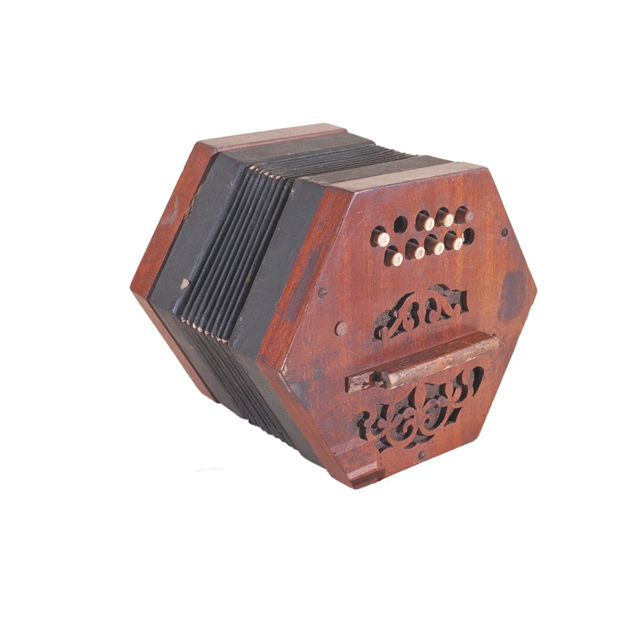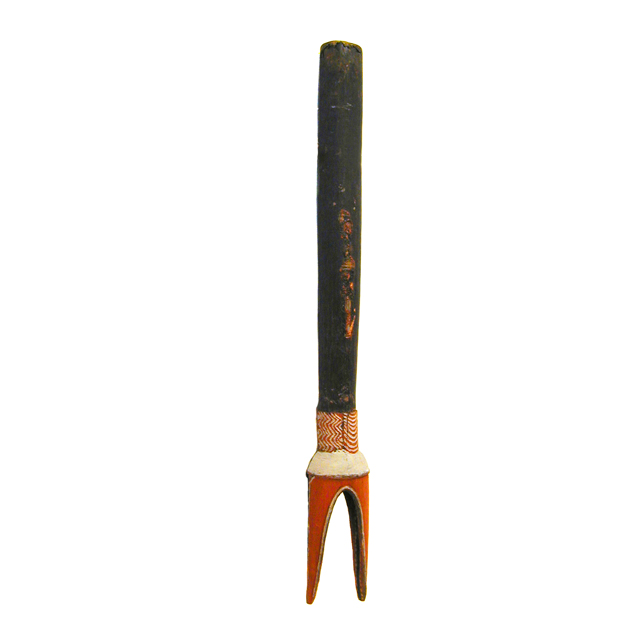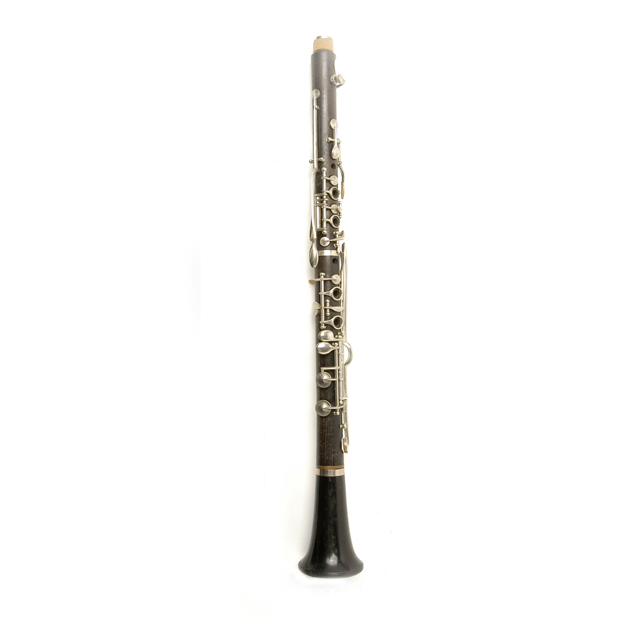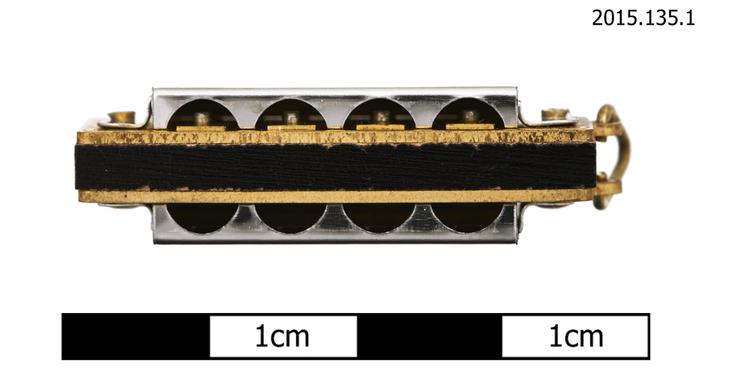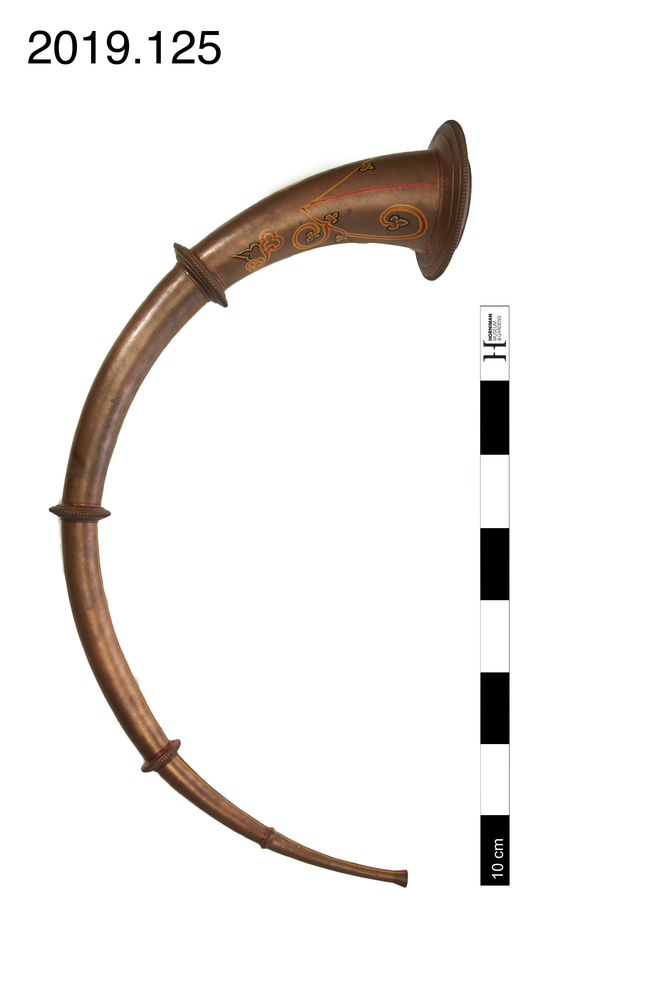
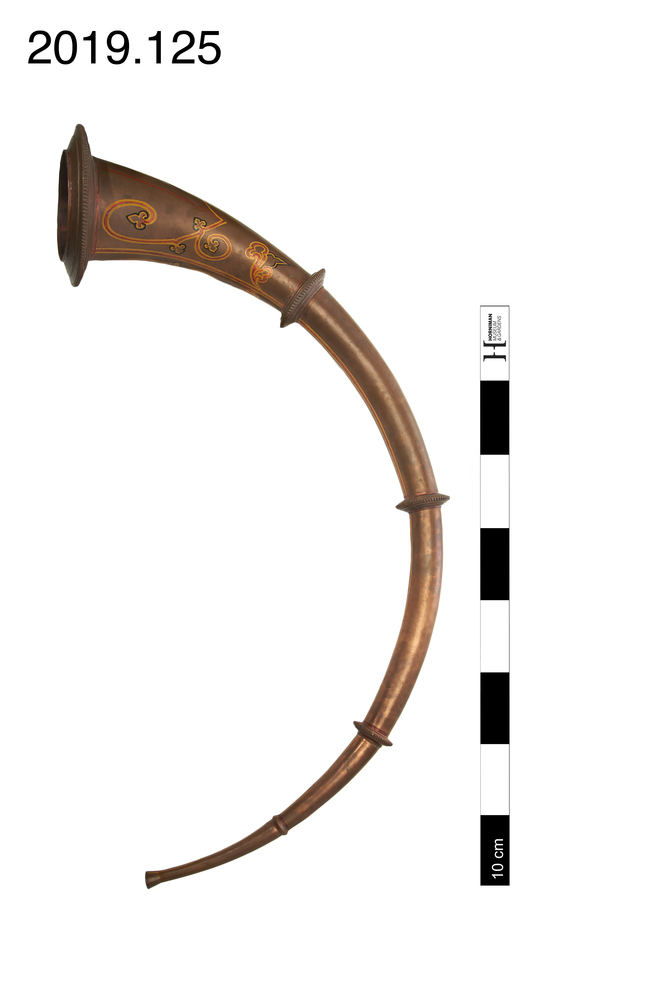
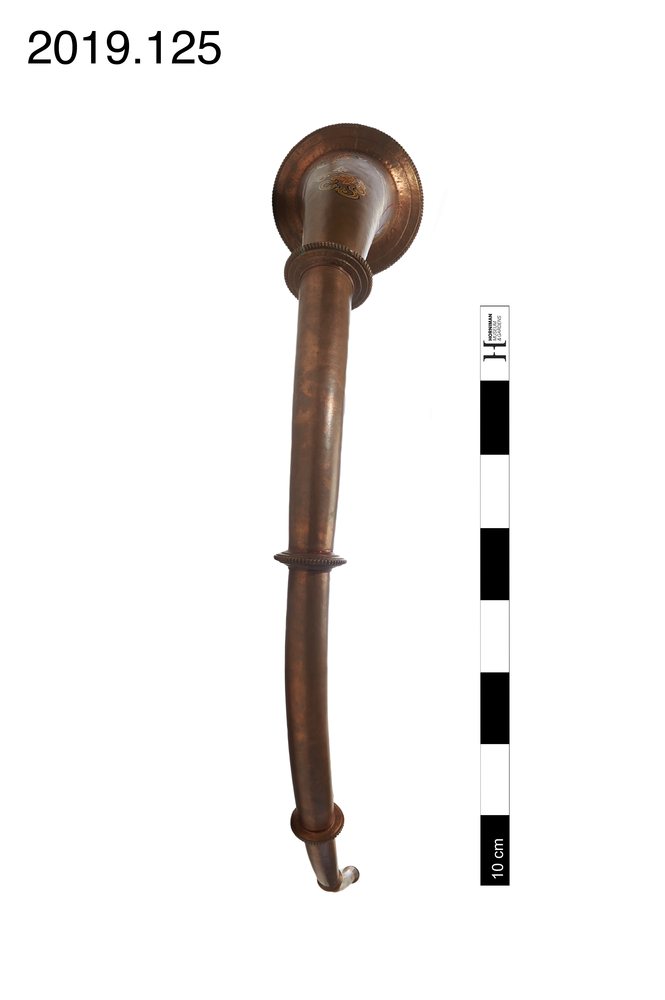
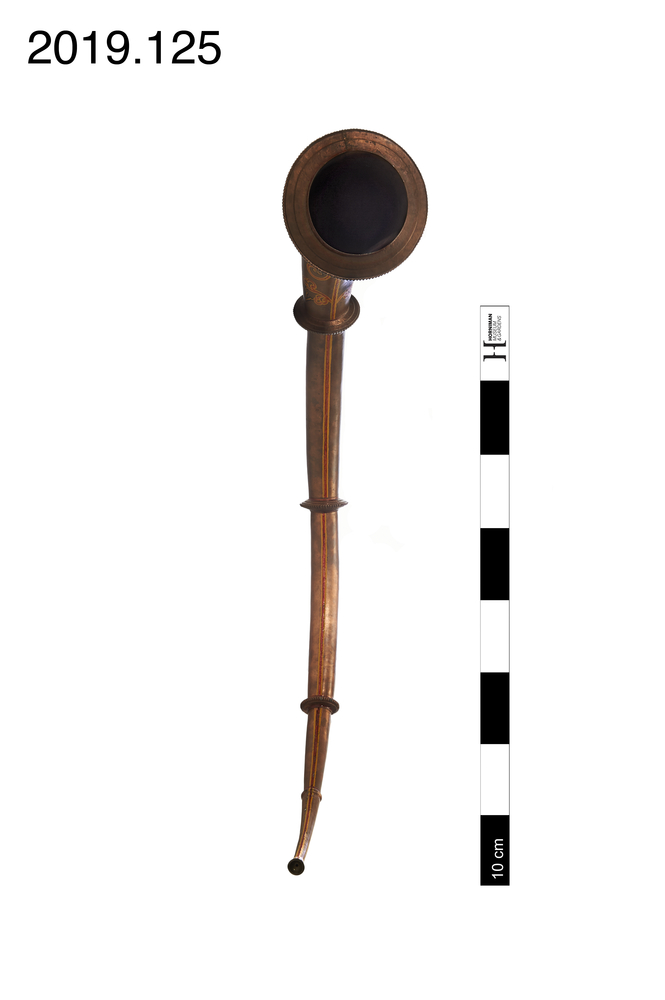
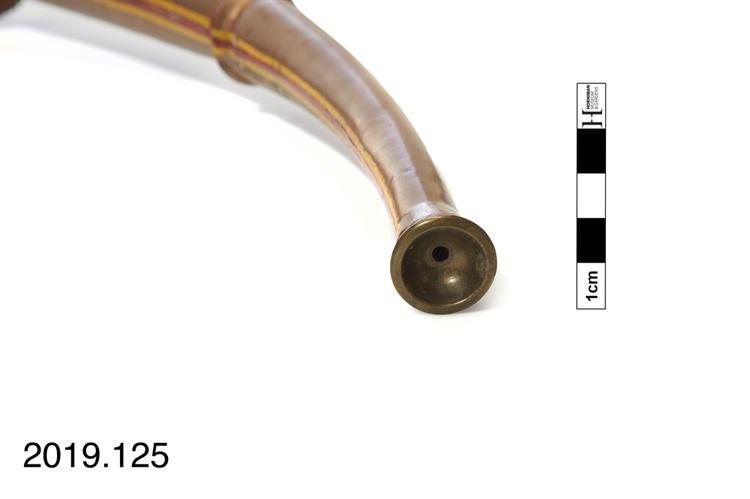
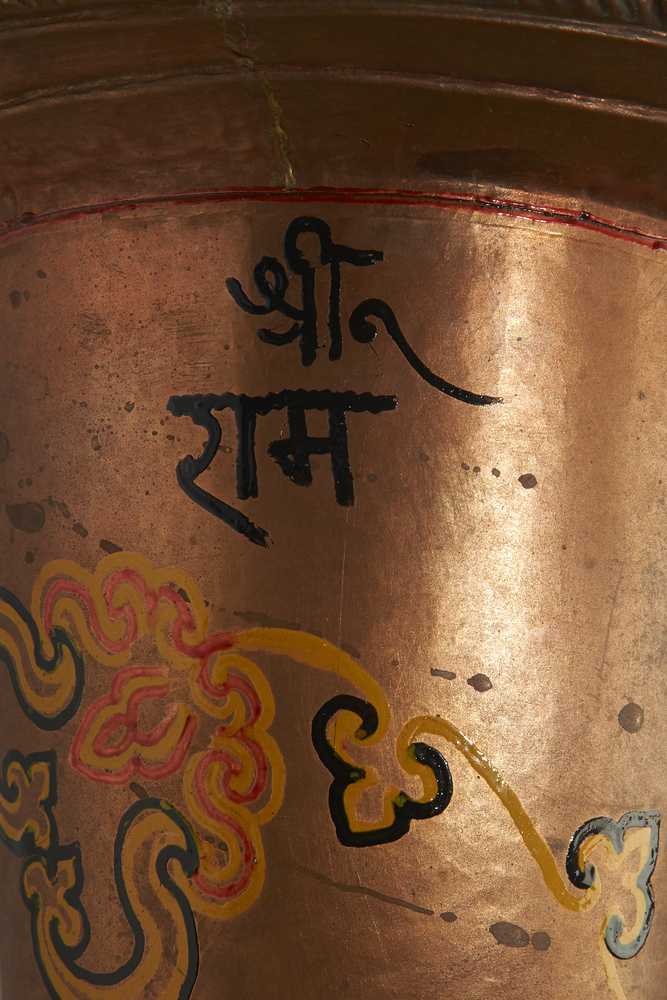
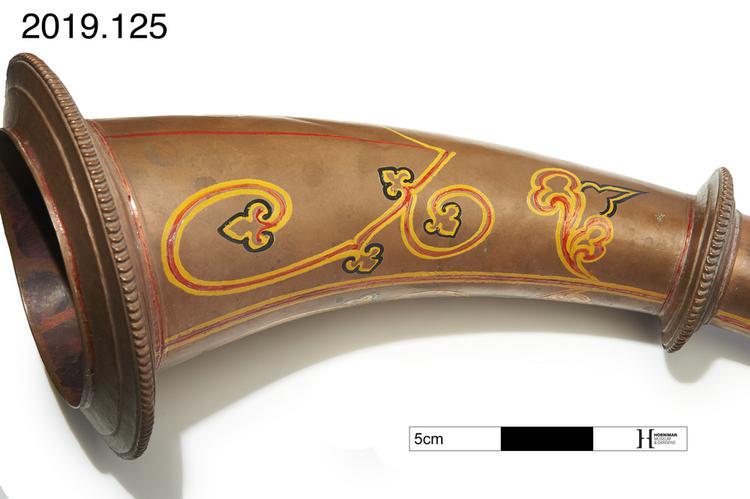
Narsiṅgā, horn. Collector’s no. 3. Purchased in in Bhojpur, East Nepal. Made by a tamrakar (coppersmith) in the Maru Ganesh district of Kathmandu in 1987. Its sounding length is approx.146cm long, with a bore expanding from 55mm at the mouthpiece to 40cm at the bell. The players of the eastern narsiṅgā utilise harmonics h7-h9 giving the following notes h7=A5, h8=B5, h9=C#6. ‘A peculiarity of the eastern narsiṅgā is that the (hollow) distal pommel contains small grains or stones, said by musicians to improve the tone. Carol Tingey. Auspicious music in a changing society: the Damai musicians of Nepal (1993), p. 61-62. Played using circular breathing.
B/W photo by Carol Tingey in British Library: Reel no. 29/Image 12-25/Date 1988-02-26/Annapurna pancai baja with narsinga players in wedding procession. Sound tape 53, Side A
Collector’s no. 4
Murchaṅgā (trump [jew’s harp]) made by Biurson Visnu Karma of Kamigau, Gorkha Bajar in 1978. Iron. Purchased from the maker by Dr Tingey for Nep.Rs 50/-. There is a superb sound recording of him playing this instrument in 1987 in the British Library: Material type – AUDIO, reference C1465/22. B/W photos by Carol Tingey in British Library: Reel no. 4/Images 23-24 /Date 1987-05-01/Biurson Visnu Karma playing the murchanga. Colour photo reel no. 21.



